I am committed to fostering interdisciplinary learning, personal growth, and enriching one's own intellectual journey.
Nur Adilla, 1st year doctoral student, Graduate School of Asia-Pacific Studies(GSAPS)
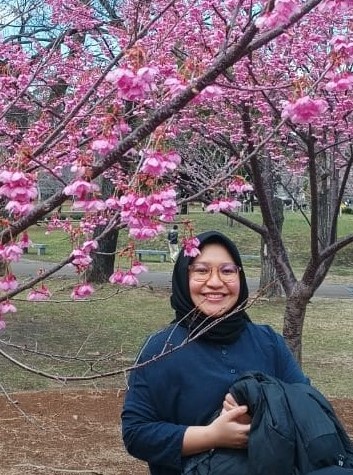
Studying in Japan was never part of my initial plan. However, everything changed when I first arrived in Tokyo in 2022 and visited Waseda University, renowned for producing numerous politicians and Prime Ministers of Japan.
Reflecting on writing this article, I've come to realize how many of my life's events have led me to Waseda University. I graduated from the University of Washington, famous for its cherry blossoms originally gifted by the Japanese government. Those delicate pink petals, blooming like snowy candy, drew people from all corners of Seattle together. Though fleeting, their beauty left lasting memories. As a former diplomat, I could not help but realize the beauty of diplomacy that produces friendship between two very distant regions – Washington State at the edge of the United States and the island of Japan – that feel close and not even an inch apart.
Waseda also rests at the very center of the intersection of all my interests–academic and personal. As an aspiring scholar specializing in gender and the social sciences, GSAPS provides an excellent multidisciplinary education that will surely fulfill my academic potential. Besides, as an author, I really appreciate the rich history of Japanese & East Asian literature produced by people at Waseda, and of course, my current favorite place on campus is The Waseda International House of Literature (Murakami Haruki Library)as it is an institution aimed at celebrating the vibrancy of world literature.
Waseda University is also well known for its strength in interdisciplinary studies, liberal arts, and international discourse manifested in its multiple events on campus. One of them was the event “That is How We Have Survived” where stories from individuals affected by the war in Ukraine were complied into the book "The Dictionary of War”. I had the privilege of participating as one of the speakers for the Student Forum program during this event. It was a deeply meaningful experience to be part of this collective reflection. However, it was also heart-wrenching, as it served as a stark reminder that while I enjoy the peace of Japan, others across the world are enduring unimaginable suffering. The event was titled That is how we have survived” International Forum on the “Now” of Words through the Voices of Ukrainian Evacuees(Iwanami Shoten).

On January 18, 2024, at the Waseda University International Conference Center, I spoke in front of an audience of about 330 people at the "That is how we survived" - International Forum on the Voice of Ukrainian Evacuees" (The author is third from the left.)
~What surprised you when you came to Japan~
I had known of the Japanese reference for the beauty of cherry blossoms. In fact, both in Seattle, Washington and Tokyo, Japan, I was living in communities that arranged their schedule during the Spring around the blooming of the flowers to visit and admire their beauty. But what surprised me the most was how the beauty and temporariness of cherry blossoms signify death in Japan.
I thought to myself,“Impermanence and death are romanticized and perceived as beauty?” I was confused and surprised because to me , for the longest time, death has always been brutal. Death was an end, bleak, dark. Humanity dreads mortality. How could it be beautiful? Death was a vice. It took me some time to contemplate the contradictions of the preconceived meaning of cherry blossoms and death in Japan. My intense reflection on this including through many conversations with my Japanese friends culminated in an article published in a Malaysian literary magazine entitled “Kematian Tumbuh Menjadi Pohon Sakura” (Death Becomes A Cherry Blossom Tree) .
I am eager to continue enriching my intellectual journey at Waseda and in Japan, where I am committed to learning and fostering personal growth. It's important to me to remain mindful of my education, including outside the classrooms, because in the shade of the cherry blossoms, I learned that beauty is not always beautiful.
Left: My friends Yuka and Keiko with my husband at Shimizu Iwaya Park in Kagoshima Prefecture, famous for its rock-carved Buddhas. Cherry blossoms can be seen across the water. Right photo: In front of Odawara Castle, a famous cherry blossom viewing spot. In a video at the museum outside the castle (Odawara Castle Ninja Museum), there was a scene in which a ninja was killed in a fight, his body fell to the ground, and became a cherry blossom tree. It was only after seeing that that I realized that cherry blossoms symbolize death in Japanese culture.

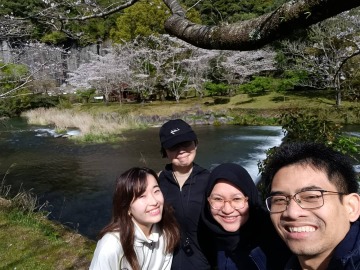

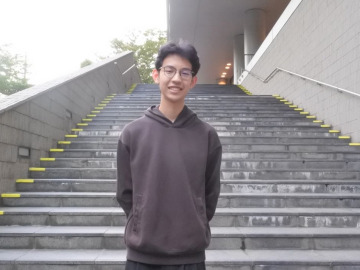
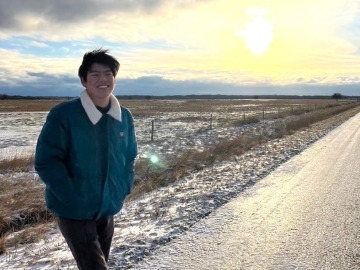
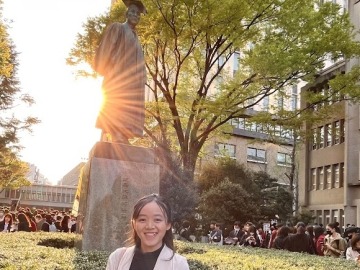


![[Save version] Map of the four main campuses](https://www.waseda.jp/inst/weekly/assets/uploads/2025/09/17cb2975123fc5103172ef60bd98608d-610x458.jpg)

